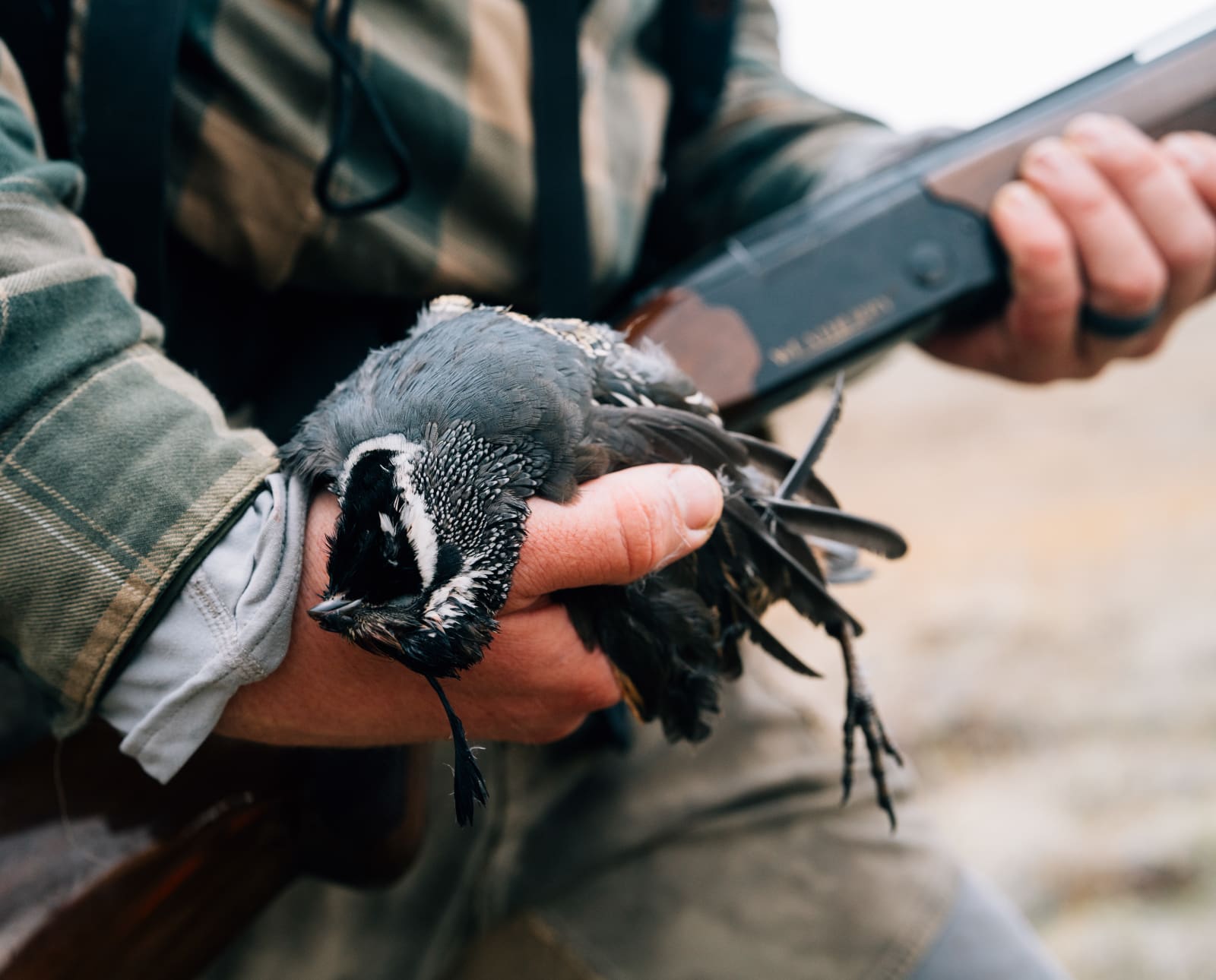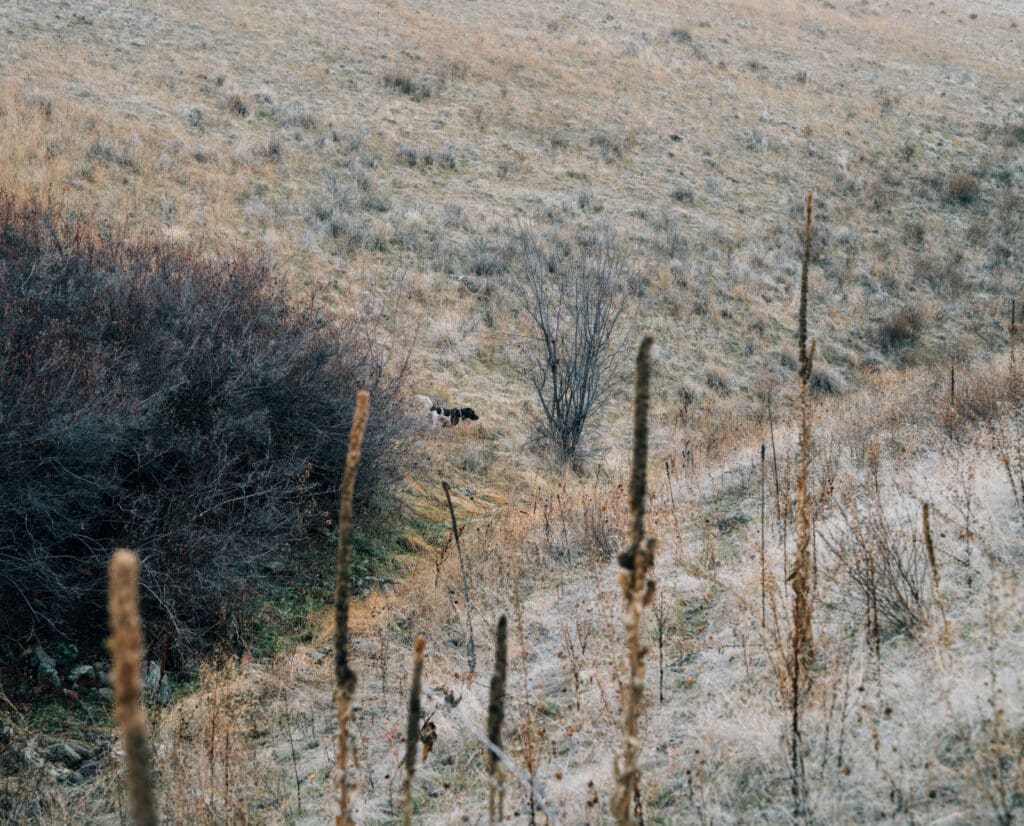Home » Quail Species » California Quail Hunting » Hunting Valley Quail on Public Land
Hunting Valley Quail on Public Land

Jennifer Wapenski is the Director of Operations and Managing Partner…
A brief guide to hunting valley quail that covers habitat and behavior for this quail season
On my public hunting grounds in central Washington, chasing valley quail (California quail) can be deeply satisfying and yet incredibly maddening. I can hike all day through endless sagebrush in search of the little beasts, only to see huge coveys milling about in every other farmer’s driveway. I swear they smirk as I drive past. On a recent trip, we put in over 10 miles exploring a new spot and scouting for likely coverts – finding just two small coveys of skittish birds. On the drive home, a stop in a local shop turned into a chat about California quail hunting. “When does the season open?” the merchant asked. “I’ve always got about 50 in the yard and would love to try cooking one of them.” Bah humbug.
My own history with the valley quail is one of failure and redemption. A quail was the very first bird that I shot over my very first bird dog. Unfortunately our training hadn’t yet addressed the proper retrieval of freshly shot birds, so to my great dismay, that first bird was swallowed whole by my young pup. It’s hard to feel good about your first bird when it takes the form of small piles of partially digested feathers and bones dotting the yard. Happily, though, we have since redeemed ourselves with a summer of training under our belt. We are back in pursuit of the humble quail and have successfully brought a few (fully intact!) home to the kitchen.
Other game birds offer more meat for the effort, but I enjoy hunting valley quail because of their larger numbers and more predictable behavior. Remember to be patient! It took me almost an entire hunting season to learn enough about these birds to be reliably successful. From a beginner’s perspective, quail offer an invaluable opportunity to observe, learn, and eventually pursue a targeted bird – even on pressured public land.

Observe the habitat of valley quail
Like any animal, valley quail require suitable cover and access to food and water. Keep these important elements in mind when surveying an area for potential habitat. On central Washington’s public land, this generally points toward the Russian Olive groves that dot the sage desert. These areas are typically marshy and provide an abundance of safe (often impenetrable) cover. These groves also provide a variety of seeds and berries that make up the bulk of the quail’s diet.
Don’t be afraid to take time to quietly observe the area. Your area may look quite different from mine, so the value in studying the birds in their habitat can’t be stressed enough. If you’re in the right spot, you’ll eventually hear the quiet “Chi-ca-go” call of the quail as they group up or communicate a move. It’s not a loud or obvious call, so it pays to be patient and observant. Oftentimes this has been our only clue that we’re in the vicinity of a covey.
Learn the behavior of valley quail
California quail coveys tend to stay in the same areas within a given season, so scouting and taking notes of your observations can help increase your success over time. As you watch the local coveys, you’ll begin to understand their patterns. As you understand their patterns, you’ll begin to find them in predictable places and situations.
Whenever I am fortunate enough to shoot a bird, I make a point of studying the contents of the crop to understand what that bird has been eating. Quail crops in my area are typically very heavy on seeds – especially from the olives – with occasional berries and leaves. This helps to identify suitable habitat and learn where the quail have been in recent days.
It may take a while, but eventually you’ll sharpen your eye toward likely coverts and begin to anticipate what your local birds are doing.
Go out hunting valley quail
It’s all fine and good to know that the quail are in a given covert, but it’s another to flush them out with a decent chance at a shot. In my hunting areas, the cover is far too thick to reasonably expect to shoulder a gun – it’s more likely that I’ll be on my hands and knees trying to find a path through the thorns when I hear the distinctive drumming of the covey flush.
If you have a hunting partner, make a plan to circle the covert and be prepared for a flush in any direction. Send someone (or a dog) into the middle to flush out the birds. You may get lucky and have a good shot at an escaping bird. If not, just pay close attention: quail don’t fly very far and their first priority is to regroup. Follow the single birds out into the open sage where you’ll have a much better chance at a clean flush and shot.
In many cases, particularly outside of these really thick coverts, quail can be slow or reluctant to flush. A pattern of walking and stopping can entice these nervous birds to fly – plus it offers another opportunity to carefully observe your surroundings. Just be sure to be prepared for the unexpected! One day, my husband and I were hunting a huge expanse of sage and stopped to discuss our next move. We stood about six feet apart on opposite sides of a chest-high bush. We chatted for at least five minutes before that bush suddenly erupted in a covey flush. Neither of us were prepared to take a shot, but the wingtips were practically hitting our faces as the quail made their escape. This made me wonder just how many other bushes held coveys that sat tight while we unknowingly walked by.
In a state like Washington that offers a wide variety of game birds – from the iconic pheasant to the elusive grouse and the wily chukar – the quail is often overlooked. However, quail offer great opportunities for sharpening your skills to become an educated and knowledgeable hunter. Once you bag a few, they are quick to cook, delicious to eat, and very much worthy of a bird hunter’s pursuit.
Jennifer Wapenski is the Director of Operations and Managing Partner at Project Upland Media Group. She has a lifelong passion for the outdoors, dogs, and wildlife; as an adult, she discovered that upland bird and waterfowl hunting were natural extensions of these interests. What started as initial curiosity soon escalated into a life-changing pursuit of conservation, advocacy, and education. Jennifer serves in a variety of roles such as the Breed Warden for the Deutsch Langhaar—Gruppe Nordamerika breed club and on an advisory committee for the Washington Department of Fish and Wildlife.



